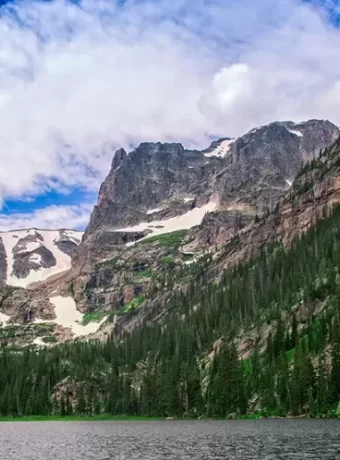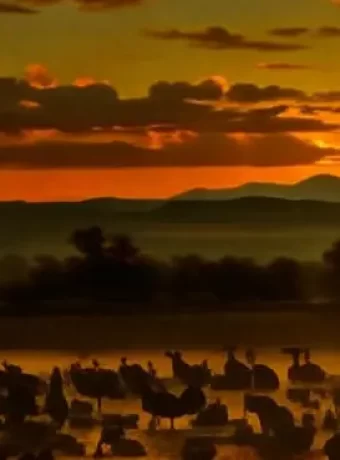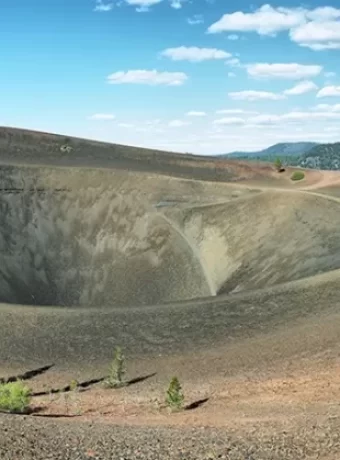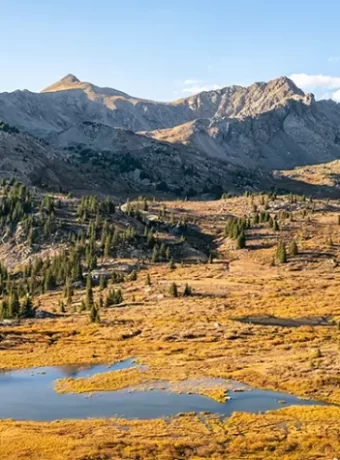Guide to DIY Arkansas White River Fly Fishing
So, you’re set on tackling DIY Arkansas White River Fly Fishing. Great choice! This guide’s going to walk you through the must-knows, from picking out your gear to finding the perfect fishing spot. We’ll cover what makes the White River a standout trout stream and how local regulations shape your experience. You’ll also get tips on mastering fly fishing techniques that could up your game.
We dive into why water levels play a huge role in fish behavior and strategies for year-round fishing success. Additionally, we explore the vital conservation measures that are essential in preserving the pristine condition of this river for future fishing enthusiasts. Ready to cast a line? Let’s make sure it lands exactly where it needs to.
Table of Contents
Essentials of DIY Arkansas White River Fly Fishing
Fly fishing the White River in Arkansas isn’t just a pastime; it’s an art form that demands skill, patience, and the right gear. Whether you’re aiming for rainbow trout beneath Bull Shoals Dam or brown trout near Cotter, success starts with preparation.
Gear Up for Success
First things first: your tackle box needs to be stocked with more than good intentions. A solid fly rod and reel combo is non-negotiable. Consider rods ranging from 3 to 8 weight single handed & switch fly rods—ideal for handling the variety of fish sizes in the river. Your line choice should match your rod’s weight capacity but also consider water clarity and flow speed when choosing colors. Leaders and tippets are next; a range allowing quick adaptation to changing conditions will serve you well here.
As for flies? The river’s diverse ecosystem supports a wide array of insect life which means mayfly hatches could become your new best friend—or worst enemy if unprepared. Popular choices include caddisflies, scuds, midges, sow bugs, and wooly buggers among others. Arkansas Game and Fish Commission provides insights into current hatch conditions which can guide your selection.

Secluded Brown Graphic Hoodie Fly Fishing Apparel
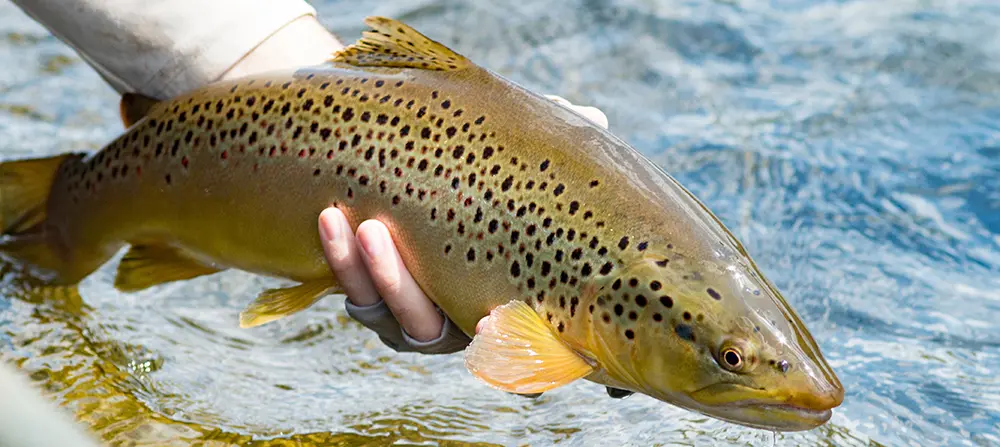
A great streamer pattern fly fishing the White River, are woolly buggers in different sizes, and colors. I love Euro-Nymphing with an Prestige 11′ – 3 weight fly rod. It’s also is a great dry fly rod.

Woolly Buggers are a Great Pattern on the White River and other Arkansas streams.
Navigating Regulations
To ensure this adventure remains enjoyable (and legal), understanding state fishing laws is crucial before hitting those clear pools or navigating main channels on early summer mornings. Every angler over 16 years old must carry an Arkansas fishing license, coupled with a trout permit if planning to venture into designated trout waters. The regulations set by AGFC not only protect these prized fisheries but make sure there are plenty left for future generations—and yes, this includes ensuring that grand slam remains as exhilarating for newcomers as it was for veterans. A handy tip: keep both digital copies on your smartphone, and printed ones tucked away safely. Having a Plan B is always a smart move.
The beauty of DIY fly-fishing along the White River lies in its challenge, the serene landscapes, and the chance at catching trophy-sized tales. Just remember, it all begins long before you cast that first line—from gearing up correctly, to making sure every aspect of your trip adheres closely to local guidelines. With these essentials covered, you’re not just ready. You’re poised for success. Now go get lost, in America’s most beautiful waterways.
Master DIY Arkansas White River fly fishing by gearing up with the right tackle, understanding local regulations, and prepping for diverse fish and conditions. It’s more than a hobby; it’s your ticket to catching trophy-sized stories amidst stunning scenery.
Prime Location Along the White River
Bull Shoals Dam to Cotter
For anyone looking to snag a trophy trout or simply soak in some breathtaking views, the stretch from Bull Shoals Dam to Cotter is your sweet spot. In this locale, you’re casting lines into the very currents where myths are born and legends take shape. The White River is home to both rainbow and brown trout thanks to its four dams—including Bull Shoals—creating fertile tailwaters ripe for the angling.
Fly fishers know this area for more than just its fish; it’s an ecosystem buzzing with life at every bend. With Beaver Lake not too far off, there’s a blend of influences that make this section of river unique.
The beauty here isn’t just skin deep though; these waters are stocked with species ready to challenge even seasoned fly anglers. Brown trout particularly love this area, maybe because they know they’re swimming in one of Arkansas’s prime spots for white river fishing.
If you’re new around these parts or need a refresher on staying legal while enjoying nature’s bounty, remember all anglers 16 and older must carry an Arkansas fishing license. And if you’re after those coveted trout? A special trout stamp is required but believe me when I say it’s worth every penny for access to these pristine conditions.
Diving into the heart of what makes DIY Arkansas White River Fly Fishing so compelling can be as thrilling as landing your first big catch under Bull Shoals’ towering presence. Yet, knowing where those hotspots like Parker Bend lie along this majestic 365-day-a-year fishable river sets apart novices from true fly-fishing aficionados who understand how vital water levels play in seeking out that grand slam – whether it be during early summer mayfly hatches or navigating through clear pools formed by shoal areas downstream.

Davy Wotton Signature Fly Rod 9'-4 weight
Designed for Euro-Nymphing by Davy Wotton, the Diamond Signature Fly Rod for White River Fly Fishing.
In essence, choosing where along this over hundred-mile-long waterway will largely depend on what kind of experience you’re chasing: whether it’s wrestling monster browns beneath the shadowy depths near Bull Shoals Dam or casting dry flies amidst serene stretches closer towards Cotter—each offers unparalleled opportunities tailored perfectly for any fly fishermen willing enough dive headfirst into adventure found only within America’s heartland riverscape.
Hit the prime spots from Bull Shoals Dam to Cotter for trophy trout and stunning views. Remember, an Arkansas fishing license and a special trout stamp are must-haves. Dive into DIY fly-fishing adventures in these legendary waters, where every bend brings new challenges and chances for a big catch.
Tackling Techniques for White River Trout
Perfecting Your Nymph Technique
Nymph fishing on the White River requires a blend of patience and precision. Given that the river offers diverse water types suitable for nymph fishing, streamer fishing, and dry fly fishing, adapting your technique is key. Aim your attention at zones where trout gather for meals, particularly under eroded riverbanks or within the calm depths of large pools.
For effective nymphing, adjusting weight and depth is crucial to match the conditions you’re facing. This might mean adding split shot to your line during high water events or going lighter when targeting clear pools. Remember, success often lies in presenting your nymphs at just the right depth where trout feel safe enough to feed.
To really dial in your approach consider using a strike indicator. This helps monitor subtle takes from fish that might otherwise go unnoticed—a common scenario when dealing with finicky trout species found throughout this mile-long river system.
Tactics During High Water Events
Fishing high water can be daunting but also rewarding if approached correctly. The increased flows associated with these events tend to displace food sources like insects and small fish—making it an ideal time for anglers equipped with knowledge about white river fly tactics specifically designed for these conditions.
Spin-fishing enthusiasts will find spinning rods quite useful during periods of elevated flow rates because they allow casting heavier lures further out into main channels where fish seek refuge from strong currents.
But don’t overlook traditional fly patterns either; larger streamers mimic displaced prey perfectly under these circumstances making them irresistible targets even among stocked rainbows accustomed more docile feeding environments created by regular stocking schedules implemented along sections downstream from Bull Shoals Dam up through Parker Bend area near Eureka Springs town limits—an important aspect anyone holding an Arkansas Fishing License should keep in mind before heading out on their next adventure.
Arkansas Game and Fish Commission’s website provides essential information regarding licenses required for those planning to engage in activities within state boundaries, including specific stamps and permits needed depending upon the location and targeted species sought after. It’s crucial for keeping our conservation work successful, making sure future generations can also experience the joy and beauty of nature.
Mastering nymph fishing on the White River means adjusting your techniques to match the river’s diverse conditions. This includes fine-tuning weight and depth, using strike indicators for subtle bites, and choosing the right tactics during high water events. Always check with Arkansas Game and Fish Commission for necessary licenses.
Year-Round Fishing Opportunities on the White River
The magic of the White River in Arkansas isn’t just in its crystal-clear waters or scenic vistas; it’s also in its ability to offer fly fishing 365 days a year. With a mix of nature’s gifts and human intervention, fishermen have the chance to pursue various trout kinds all year round. But what makes this river stand out among others? Let’s dive into how diverse habitats, miles downstream, and controlled water levels come together to create an angler’s paradise.
Fishing 365 Days a Year
One might wonder how a single river can provide such consistent fishing opportunities throughout the year. The secret sauce is the North Fork River which injects cool and oxygenated water into the White River allowing trout to survive downstream even during warmer months. This continuous flow maintains ideal conditions for various trout species making any day potentially your best fishing day yet.
What sets apart seasoned fly fishers from novices often comes down to understanding these dynamics—knowing that post-rain high-water events may bring about more significant catches as fish become more active with increased flows. Adjusting techniques based on whether you’re facing clear pools or rushing channels will make all the difference.
Tackling Trout Species Miles Downstream
The diversity doesn’t stop at weather resilience; it extends into what you’ll find beneath those rippling surfaces too. From feisty rainbow trouts stocked rainbows by local hatcheries ensuring vibrant populations, brown trouts lurking around structures waiting for mayfly hatches, or aiming for that grand slam by catching cutthroat and brook trouts too—the variety is dizzying but exhilarating.
This ecosystem thrives under careful management practices including stocking programs run by Arkansas Game and Fish Commission, ensuring sustainable fisheries while providing thrilling experiences for both novice enthusiasts exploring white river trout possibilities and seasoned pros pursuing their next trophy catch amidst breathtaking nature views miles downstream.
Navigating Changing Water Levels Successfully
Becoming adept at navigating fluctuating water levels plays a vital role in unlocking successful outings along this remarkable stretch of freshwater heaven—the ability not just appreciated but required amongst those who consider themselves true fly anglers.
From wading near Parker Bend during low releases looking for perfect spots hidden within main channel cuts to boating closer towards Bull Shoals Dam when higher volumes promise bigger rewards, understanding these shifts could mean landing sizable browns over wild caught tales shared back home.
So next time you’re planning your adventure, remember—every visit offers something new. This is thanks to the varied environments maintained here, ensuring unforgettable moments are spent with a rod in hand no matter what.
Fly fishing on the White River in Arkansas is a year-round adventure, thanks to its diverse habitats and managed water levels. Understanding river dynamics and adjusting your techniques can lead to successful catches any day of the year. Embrace the variety of trout species and navigate changing waters like a pro for an unforgettable experience.
Role of Water Levels in Successful Fly Fishing
Navigating the White River’s waters, with their myriad personalities, turns into an elaborate dance where understanding the depth and flow is crucial. High water events can transform this tranquil trout stream into a dynamic battlefield, challenging every fly fisher to adapt or miss out on potentially larger catches.
Tactics During High Water Events
When Bull Shoals Dam releases more water than usual, it’s not just an inconvenience; it’s an opportunity. Amidst the heightened water flow, an abundance of sustenance awakens the trout’s vigor, presenting anglers with a prime chance to lure them in, provided they adeptly refine their approach. One key adaptation involves switching from dry flies to nymphs or streamers that can dive deep into the swirling currents.
Mastering the high waters demands a keen grasp of the area’s specific characteristics. Regular checks on Arkansas Game and Fish Commission’s website give insights into current flows from Bull Shoals White River and other release areas such as Parker Bend or Norfork Tailwater—vital information that lets anglers plan their trips around optimal fishing conditions.
Another tactic worth considering during high-water periods is focusing on eddies and slower pools adjacent to the main channel. Here, stocked rainbows and wild brown trout seek refuge from strong currents—a perfect ambush spot for savvy fly fishers equipped with sinking lines or heavily weighted flies designed specifically for white river fly-fishing during high water situations.
This approach requires patience but pays off by offering unique opportunities not available under normal conditions—for instance catching elusive species like cutthroats which might venture closer towards accessible banks seeking quieter waters amidst chaos brought about by elevated flows.
But remember: safety first. Increased flow rates mean stronger currents which pose significant risks especially near shoals dam areas where footing may become treacherous very quickly even for experienced anglers familiar with Arkansas’ premier trout fisheries terrain along Eureka Springs down through miles downstream toward North Fork confluence points injecting cool oxygenated streams critical year-round habitat sustainability across this 365-day-a-year fishing paradise despite seasonal fluctuations presenting both challenges rewards those willing learn listen rhythms beneath surface what truly makes each section bull shoals white unique among nation’s top destinations enthusiasts all skill levels find solace pursuit grand slam dreams against backdrop unparalleled natural beauty nestled heart Ozarks region ready explore?
Mastering high water events on the White River turns challenges into opportunities. By switching tactics, like using nymphs or streamers and focusing on eddies, you can catch more active trout. Always check local conditions for safety and to find the best spots.
Getting Around – Access Points along the White River
Finding your way to a prime fishing spot on the White River doesn’t have to be like searching for a needle in a haystack. Whether you’re eyeing that trophy trout or just looking for serene waters, knowing where to start can make all the difference. Our handbook is your ticket to discovering the key entry points along the river, unlocking a self-guided journey into fly-fishing that you won’t soon forget.
Fishing Area and Public Access: Your Gateway to Adventure
Spanning more than 700 miles, the White River unfolds a myriad of pristine locations awaiting your discovery. But not all access is created equal. For those ready with their rods and reels, key areas stand out as starting points of choice due to their ease of access, abundance of fish, and breathtaking views.
One such gem is Bull Shoals-White River State Park. Here, anglers find themselves at one of Arkansas’s premier trout fisheries thanks in part to its location below Bull Shoals Dam—the very dam responsible for creating this cold-water haven ideal for rainbow and brown trout alike.
Parker Bend is another notable mention among seasoned fly fishers. Easily accessible yet surprisingly peaceful, it offers clear pools mixed with faster-moving sections—a combination that promises both challenge and reward whether you prefer nymphs or dry flies.
Navigating Your Journey: What You Need To Know
To fully embrace your river journey while staying within legal bounds requires more than just knowledge about where the fish are biting; understanding local regulations plays a vital role too. Before casting your line into these pristine waters, remember anglers aged 16 years old and above must carry an Arkansas fishing license. If targeting those elusive trout specifically tickles your fancy then gearing up with an additional trout permit becomes essential—it’s how you respect both game laws and conservation efforts aimed at preserving these aquatic treasures long-term.
Moreover navigating water levels proves crucial across different seasons—too high or low could significantly impact not only safety but also success rates during outings thus emphasizing why savvy fishermen always check current conditions before heading out particularly after significant rainfall events which tend raise levels rapidly potentially altering available habitats temporarily pushing them towards slower moving parts deeper channels making adaptability skill every effective angler should master regardless experience level involved.
Find the best fishing spots on the White River by knowing where to start. Bull Shoals-White River State Park and Parker Bend offer easy access, abundant fish, and beautiful views. Remember, you need an Arkansas fishing license and possibly a trout permit. Always check water levels for safety and success.
Importance of Conservation Efforts
Preserving the natural habitat of the White River is not just a noble cause; it’s essential for maintaining its status as a premier destination for anglers chasing that trophy trout or vibrant rainbow trout. Nurturing this river’s environment is crucial as it shelters diverse species, highlighting the necessity of safeguarding measures.
Fishing Regulations: A Tight Line on Preservation
One might wonder why there are so many fishing regulations. The answer lies in balance. These rules aren’t just bureaucratic hurdles but crucial steps to ensure future generations can enjoy what we have today. By implementing fishing laws, we not only curb the depletion of fish stocks but also guarantee that illustrious species such as trophy trout flourish in their wild habitats.
Moreover, specific catch-and-release areas safeguard certain stretches where these magnificent creatures breed and grow. By adhering to Arkansas Game and Fish Commission guidelines, anglers play a direct role in conservation while still enjoying the thrill of the catch.
A Habitat Worth Fighting For
The picturesque charm of the White River unfolds not by chance, but through relentless efforts to shield its waters from contamination and environmental adversaries. Healthy habitats lead to healthy fish populations which are vital for sustaining diverse ecosystems within our rivers.
This effort extends beyond simple enjoyment or sport – it’s about preserving biodiversity. With initiatives focused on keeping waters clean and free from invasive species, Arkansas ensures that native plants and animals have room to flourish alongside recreational activities like fly fishing.
Tackling Climate Change with Every Cast
Last but certainly not least is addressing climate change – arguably one of our biggest challenges yet profoundly impacting river environments worldwide including temperature shifts affecting mayfly hatches crucial for fly fishermen aiming for success during early summer expeditions downriver.
By supporting organizations dedicated to fighting climate change through responsible practices such as catch limits or promoting barbless hooks usage among angler communities around Bull Shoals Dam region we collectively contribute towards healthier more resilient ecosystems capable thriving under changing conditions thus securing longevity exciting fishing opportunities everyone enjoys irrespective season year-round engagement becomes possible thanks strategic stocking programs designed adapt evolving ecological scenarios without compromising quality experience seekers clear pools main channel alike find solace amidst nature pursuit perfect cast brings together people across different walks life shared passion adventure discovery embedded very essence DIY Arkansas White River Fly Fishing adventures await those willing take stand preservation heart every action taken riverbank itself testament resilience hope face adversity challenge makes unique treasure worth protecting all costs future generations marvel too.
Conserving the White River is key for future fishing. By following regulations and supporting climate action, anglers ensure trophy catches remain a thrill for all. It’s about more than just fishing; it’s preserving biodiversity and tackling challenges head-on to keep the river thriving.
Hiring Local Expertise – Guides in Arkansas
Imagine trying to find a needle in a haystack. Now picture finding the biggest, brightest fish in the vast waters of Arkansas’s White River. That’s where hiring local expertise comes into play, offering you not just a guide but an ace up your sleeve. Such as renown White River guide Davy Wotton.
Leverage local knowledge by hiring guides who can enhance your DIY fly-fishing experience with insider tips
Fly fishermen often ponder whether to go solo or enlist the help of fishing guides when embarking on their adventures along the White River. Opting for the insight of locals can elevate a standard fishing trip to an unforgettable exploration.
Arkansas’s seasoned fly fishermen know this river like the back of their hand. They’re privy to its secrets – from hidden coves teeming with trout to understanding how weather patterns affect fish behavior. This intimate knowledge isn’t something you’ll find in any guidebook; it’s earned through years spent wading and casting lines across every inch of these waters.
The benefits extend beyond mere guidance on where to cast your line; they encompass learning advanced techniques specific to river fly fishing conditions unique only here—where water levels play such a vital role in day-to-day success.
Why choose guided fly fishing trip first time out?
Opting for a guided tour isn’t merely about discovering the hotspots for trout; it’s an immersive education in cherishing and safeguarding one of the most untouched trout habitats in the U.S., ensuring its wonders remain for those who follow. Conservation efforts have made places like Bull Shoals Dam renowned for trophy catches while maintaining ecological balance—a delicate dance best navigated under expert supervision.
In addition, having someone familiar with all aspects—from acquiring necessary permits and licenses (remember anglers 16 and older need that Arkansas fishing license)—to advising on effective fly patterns ensures nothing gets overlooked during preparation phases either.
For those ready to tackle everything from mayfly hatches early summer mornings at Parker Bend or navigate high water events near Beaver Lake, consider enlisting a professional guide as part of your strategy.
Remembering that each section downstream holds different challenges —and opportunities—is crucial.Whether seeking out stocked rainbows amidst clear pools near Eureka Springs or aiming for that grand slam further downriver, understand: no two days nor areas will ever be quite alike here.
Hiring a local guide isn’t just about finding fish; it’s unlocking the White River’s secrets with an expert who knows every hidden spot and technique. It means more than guidance—it’s learning to preserve this fishing haven for years to come, ensuring you’re fully prepared with licenses and gear, all while experiencing unique challenges in each river section.
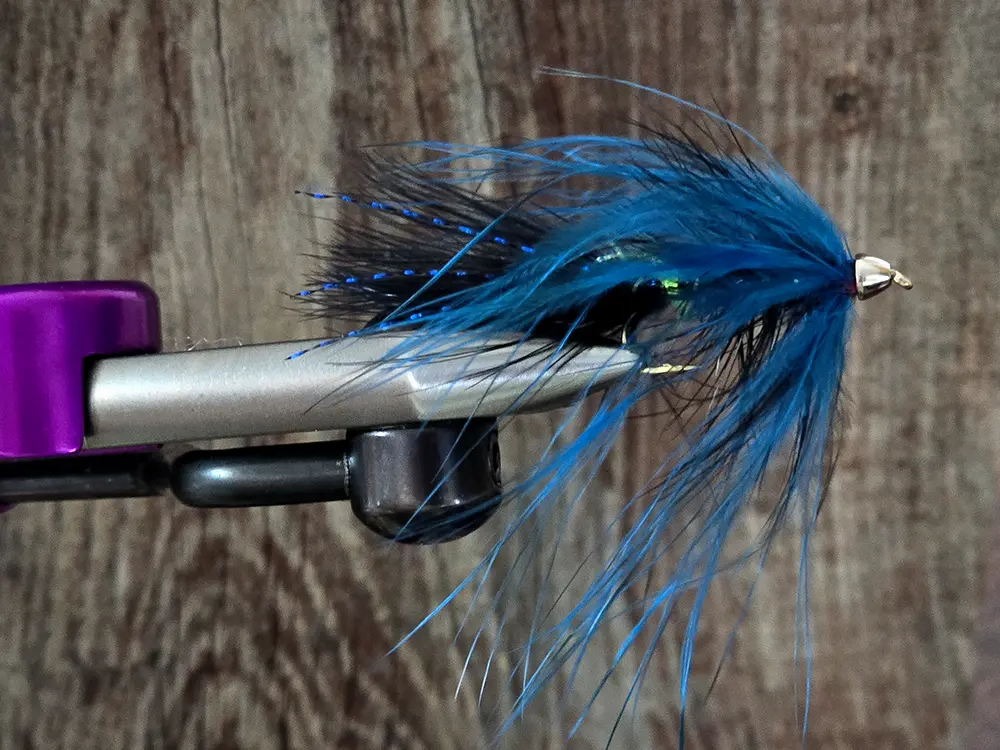
Black and Blue Intruder
Fly Tying – Best Flies for Catching Trout in Arkansas
When it comes to fly fishing, especially in the diverse waters of Arkansas, knowing your flies can make or break your day. Let’s talk about the top performers that have proven their worth time and again.
Sow Bugs: The Underestimated Champions
Often overlooked but incredibly effective, sow bugs are a staple in the diet of trout found throughout Arkansas rivers. Nestled in the river’s embrace, these creatures become one with the terrain, a feast for the trout lying in wait. For anglers aiming for success on clear pools and slower sections of streams like those downstream from Bull Shoals Dam, presenting a well-tied Sow Bug can often lead to surprising results.
In water bodies where vegetation is rich and aquatic life thrives—think areas near Parker Bend—the natural appearance of sow bugs mimics the real deal closely enough to fool even the wariest of fish.
Caddis Flies: The River’s All-Rounder
No discussion about fly selection would be complete without mentioning caddis flies. Versatile and varied, these insects hatch through much of early summer across most trout streams including hotspots along White River’s prime locations from Bull Shoals Dam down to Cotter. Anglers armed with patterns resembling caddis larvae or adults find themselves well-prepared for an array of fishing conditions whether they’re dealing with high water events or targeting stocked rainbows during mayfly hatches.
The trick lies not just in choosing any caddis pattern but selecting one that matches local species; something guides around Eureka Springs could tell you more about if asked.
Midges: Small But Mighty
Don’t let their size fool you; midges play a vital role within Arkansas’ trout fisheries. Especially during colder months when larger insect activity dwindles down, midges become a main food source keeping both rainbow and brown trout actively feeding through winter into spring—a period when other fishermen might hang up their spinning rods assuming little action is available on shoals white rivers flow past Beaver Lake too.
A simple yet effective strategy involves focusing on tailwaters below dams like Norfork where consistent releases maintain ideal temperatures year-round encouraging prolific midge hatches capable supporting vibrant populations trophy-sized browns eager bite what appears be effortless meal floating by above submerged rocks weed beds alike perfect nymph technique practice indeed.
Streamers: Last But Not Forgot
Intruders on a trout spey rod, woolly buggers, muddler minnows, and the list continues.
White River Fly Fishing Tip:
Mastering the right flies like sow bugs, caddis flies, and midges is key to unlocking fly fishing success in Arkansas’ diverse waters. From mimicking bottom dwellers to matching local hatch patterns, choosing the correct fly can lead to trophy catches in places like Bull Shoals Dam and beyond.
Frequently Asked Questions about Fly Fishing in Arkansas
Is a Special License Needed?
If you’re planning to tackle the clear pools and fast-moving stretches of the White River, keep this in mind: anyone aged 16 and older will need an Arkansas fishing license. But that’s not all; if your sights are set on those stocked rainbows or aiming for the grand slam of trout species, you’ll also require a trout permit. This might sound like a hassle, but it’s actually quite easy to sort out. You can get everything sorted online at Arkansas Game and Fish Commission, ensuring you’re ready to hit those famous fly-fishing waters legally.
The river itself is home to some prime fishing spots from Bull Shoals Dam down through Cotter, renowned for its brown and rainbow trout populations nurtured by four dams creating ideal tailwaters.
Bait or Flies? Ought to not Even Be a Question 🙂
I am a trout bum and when see someone asking this, I feel the answer is obvious.
In Arkansas’s cool waters, especially along the White River known for its premier trout fisheries, flies reign supreme over bait. It’s not just about tradition; artificial flies mimic natural food sources more effectively here compared with live bait. For newbies testing these waters or seasoned pros looking to up their game during mayfly hatches early summer or navigating high water events post-rainfall—the right fly can make all the difference.
Choosing between nymphs mimicking underwater critters or surface-skimming dry flies depends largely on where you find yourself along this 720-mile river system stretching from Bull Shoals Lake down past North Fork into lesser-known gems like Parker Bend near Eureka Springs. Whether casting into deep channels during low water periods when spinning rods might seem tempting or going after stocked rainbows in accessible release areas—knowing local conditions plays a vital role.
And while exploring options like hiring guides could enhance your experience by providing insider knowledge on hotspots across diverse habitats—from clear pools behind shoals white as snow under sunny skies to main channel runs swelling with spring thaws—it’s equally important understanding how each stretch makes this river unique among American trout streams. Check out AGFC for real-time updates on river flows before setting off—an informed angler is often a successful one.
Before you cast a line in the White River, grab an Arkansas fishing license and trout permit online to fish legally. Flies beat bait here, mimicking natural food sources for trout effectively. Know the river’s conditions with real-time updates from AGFC to boost your chances of success.
FAQs in Relation to DIY Arkansas White River Fly Fishing
What size fly rod for White River Arkansas?
A 9-foot, 5 or 6 weight fly rod balances versatility and power perfectly for the diverse trout of the White River.
What is the best bait for trout on the White River in Arkansas?
In these waters, scuds, sow bugs, and midges reign supreme as top baits to fool those wary trout.
Can you fly fish at White River Arkansas?
Absolutely. The White River’s rich ecosystem makes it a prime spot for year-round fly fishing adventures.
Where is the best place to fish for trout in the White River?
The stretch from Bull Shoals Dam to Cotter brims with trophy-sized trout. It’s an angler’s dream spot.
Conclusion of DIY Arkansas White River Fly Fishing
Embarking on DIY Arkansas White River Fly Fishing is a journey into the heart of nature’s finest trout streams. You’ve learned to gear up right, navigate regulations, and pinpoint prime fishing spots. Remember: success lies in preparation.
Mastering fly fishing techniques sets you apart. It turns challenges into triumphs as water levels shift and seasons change. Let these strategies guide your approach, adapting with each cast.
Fishing here isn’t just about the catch; it’s respecting the river’s legacy through conservation efforts. This ensures future generations can share this experience.
Ultimately, tapping into the wisdom of locals elevates your journey, weaving together insights and the wilderness for moments beside the stream that you’ll always remember. Carry these teachings with you, allowing them to mold each new journey down the White River.
Arkansas to Alaska or Italy
Yes, Italy has great trout fly fishing.

